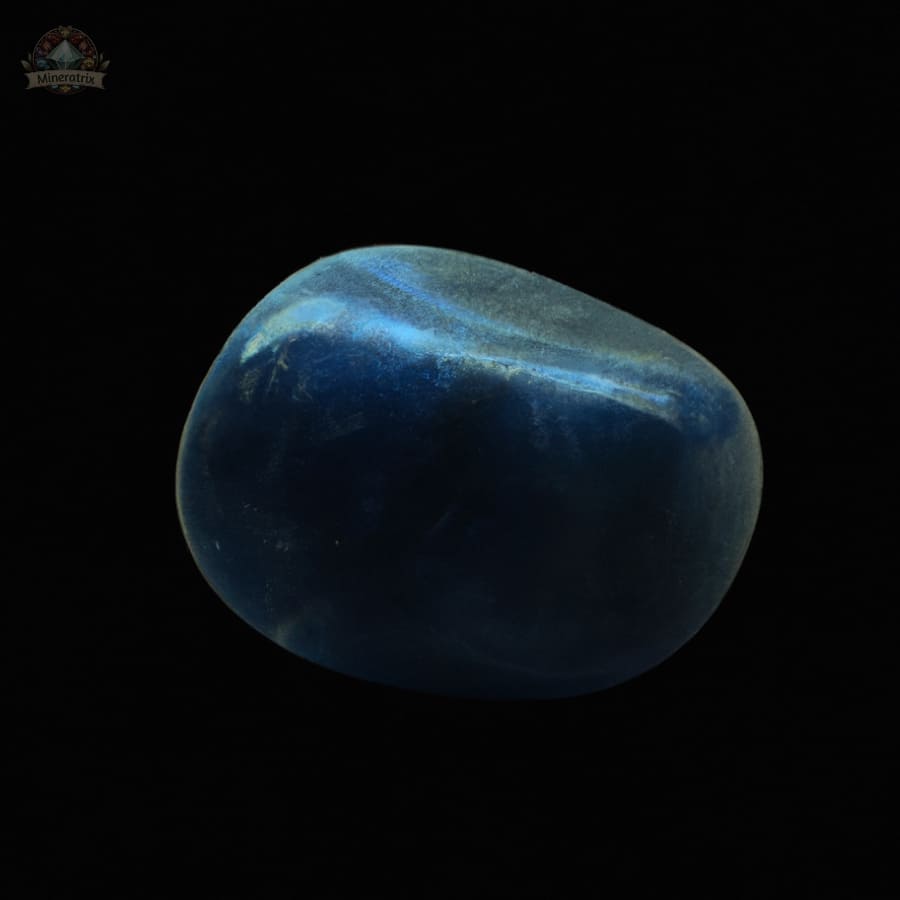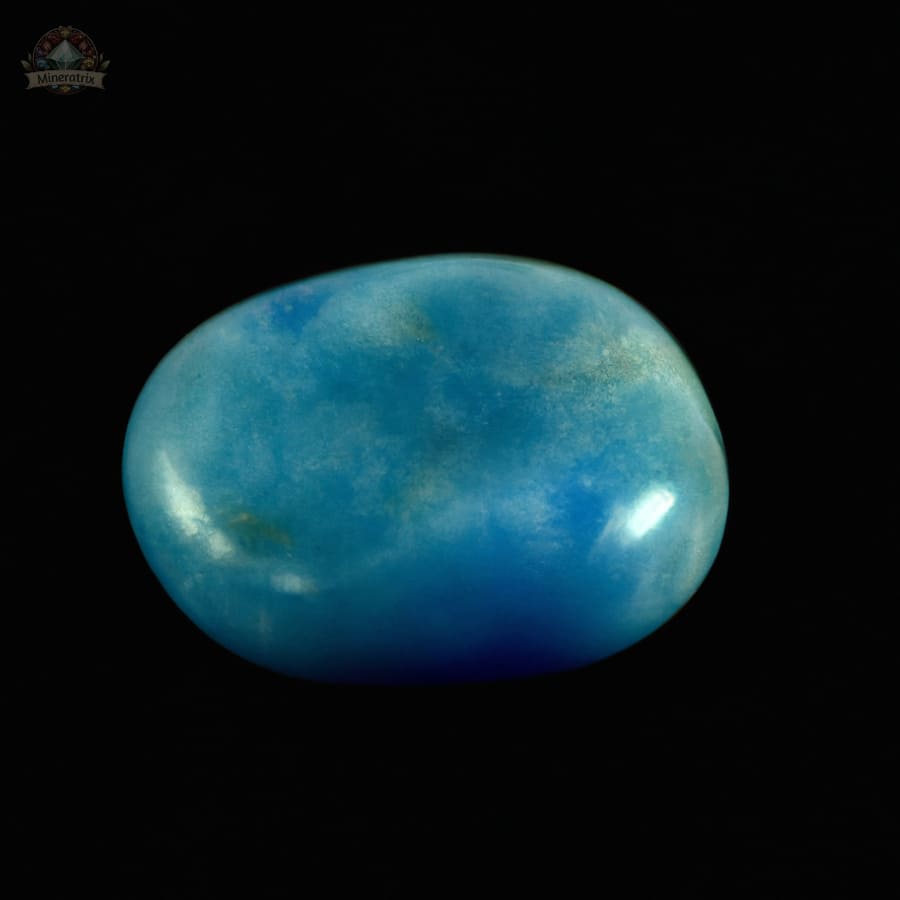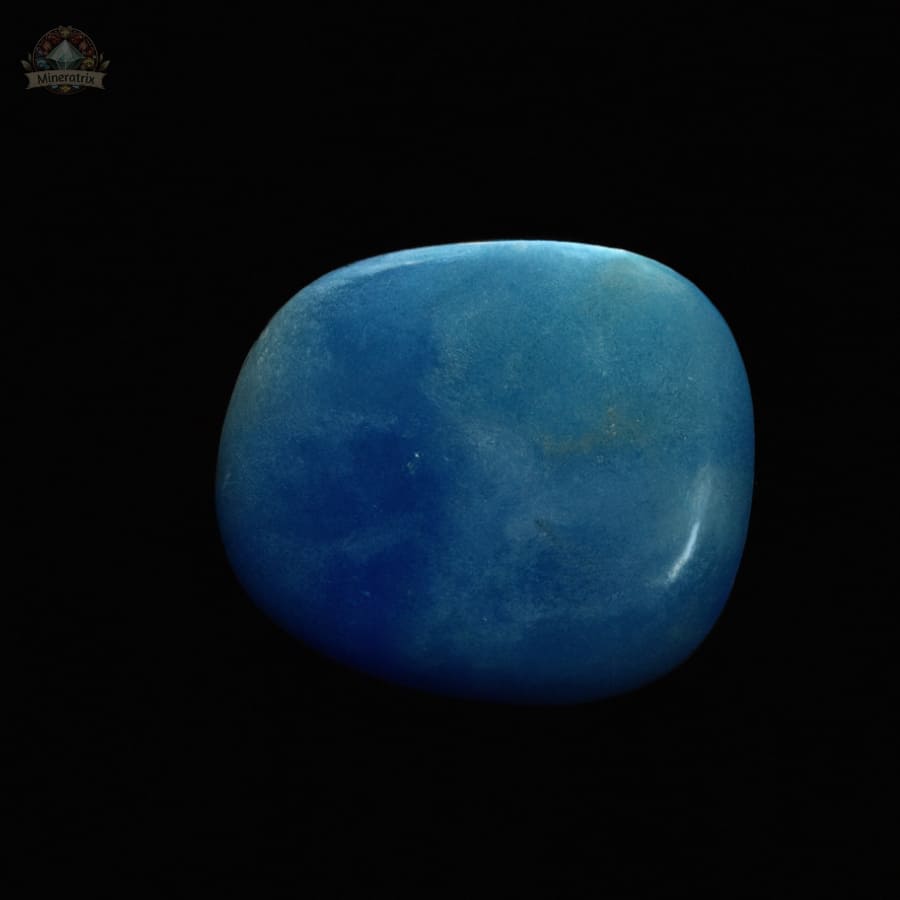
Blue aventurine is a gemstone used in esotericism and ornamental jewelry, which has healing qualities and a great attraction to fortune. Next, we will explain in more detail the existing uses and their properties and benefits.
Table of Contents
Characteristics and physical properties of blue aventurine
This translucent-looking stone with a vitreous sheen grabs your attention instantly; this frosty effect is known as “aventurescence.” It is a very resistant quartz, having on the Mohs scale hardness of 7/10. This gemstone is part of the trigonal crystal system. It weighs between 2.6 to 2.7 grams per cubic centimeter.
It has a chemical composition that is part of oxides, such as silicon. Its chemical formula is SiO2, which is found in nature as quartz. At the metallurgical level, it has a low thermal percentage being resistant to high temperatures and insulating at the electrical level.
Most chemical components can unalter it except for alkaline ones because they have a very high level of corrosion.
Blue aventurine belongs to the silicates group and is also a type of quartz. In addition to this, it is a variant of chalcedony (microcrystalline quartz). Its bluish coloration is due to insertions of minerals such as blue lepidolite, muscovite, riebeckite, and glaucophane, giving a shade of whitish-grayish and bluish colors.
Summarizing:
| Property | Value |
| Hardness on the Mohs scale | 7 |
| Brightness | Vitreous |
| Transparency | Translucent |
| Chemical composition | SiO2 |
History
The vast majority of blue aventurine originates in Karnataka in India; it can also be found in Brazilian deposits. In addition, a legend tells that the origin of its name comes from the Italian “Ventura,” which means “by chance” because that is how this stone was discovered.
Certain historical documents date its use in the past, where for example, you can see that already in the sixteenth century, it was used to make a chalice, according to this document.
Its blue color is generated by an optical effect that produces the stone when observing it, in the same way, that happens with the sea.
Formation and deposits
This mineral is formed naturally in magmatites at the volcanic level; its origin is metamorphic, and it remains in a surplus form when it is separated in deep regions of the ferromagnetic silicates of dark color, reaching temperatures between 650-1250°C.
When they reach the surface, these liquid masses reach cold temperatures, causing magma to solidify and thus generate quartz.
Blue aventurine is a rare and unique stone belonging to the quartz family; its microcrystalline appearance makes it more difficult to find, and its shades may vary depending on the inclusions granted. The countries where the most important deposits are located would be Brazil, Italy, China, and India.
In addition, they can be found in other shades, such as the golden blue type of aventurine, with inclusions of Dumortierite.
Properties and spiritual significance of blue aventurine

Blue aventurine is said to be a wrought stone with the attributes of wind and water that directly influences the emotional realm so that the lucky person can find a balance in his life. This energy that it gives off can help its wearer manage negative emotions and give the strength to face difficult situations.
In esotericism, it is considered a stone that can improve your life, and its solid astral energy allows you to develop skills that will enable you to have a more stable connection with the spiritual world. In this way, it may help you improve your confidence and leadership and strengthen your determination to achieve your short- or long-term goals.
Its numerology is 3, and its zodiac sign is Aries. However, it has a strong affinity with the signs Taurus and Gemini.
Spiritual Connection
It is compatible with the chakra point located in the center of the forehead, known as the third eye (Ajna); it can help expand intuition, achieving a remarkable increase in clairvoyance and improving reasoning and discernment. Its element is light.
In addition, it shares a relationship with the throat chakra (Vishuddha); when this point is unblocked, the creativity of thought flows more efficiently, achieving better internal and external communication. In addition, bringing the stone closer to the desired chakra point could enhance its effects.
Mental healing
Blue aventurine is said to have healing properties that help deal with stress and changes coming into our life. Also, it can help undo habits that harm us, such as anger issues or selfishness.
It could also cure all melancholy, improve optimism and increase the will to live. It is said to be effective against depression when you feel that life does not make sense, and provides tranquility and a broad perspective of your environment; It transmits peace to your soul, being able to help with your complexes and uncertainties, obtaining greater prosperity in our social and professional environment.
Physical healing
Notably, joint, muscle, and throat pain can be mitigated in the physical field. It could guarantee optimal respiratory system performance; it is also said to regulate fever. And some comment that it controls hormones and improves blood fluidity. In addition, it could be used to break up excessive substance use.
Emotional properties
In the emotional realm, it could help to assume responsibility, to understand that we must take charge of ourselves for what we want to do for our future. This stone, being blue, is associated with tranquility and calm, allowing us not to be affected by external influences and encouraging self-love.
Uses of Blue Aventurine

Blue aventurine can be used in the fields of jewelry and medicine. Here are the following uses:
It is used in natural medicine
Frequently, it is used to manufacture potions that increase the body’s healing capacity, whose effectiveness may vary depending on each person and the area applied. It is usually prepared by placing in a vessel 10% alcohol (Pome), 90% mineral water, and blue aventurine.
Subsequently, in a place with enough light, it should be left to stand for one month; after the established time, the blue aventurine is extracted, then the elixir is packaged. If the person does not want to consume alcohol, it can be replaced by honey because this is a natural preservative. You can apply this elixir in two ways:
- Tongue application
Two drops are applied under the tongue a day. It is not advisable to swallow them directly since the most effective way is to mix them with saliva. If it is ingested on an empty stomach a couple of hours before eating, its effects will be more significant.
- Applying as a topic
Adding an ointment as a base is recommended, preferably with petroleum jelly. This way, mineral fat is created to favor its possible healing abilities.
Use in jewelry
Due to its captivating radiance, known as aventurescence, blue aventurine is used in creating amulets or protective talismans to eliminate bad personal energies and our environment. Although, its most frequent use is in elaborating rings, earrings, necklaces, bracelets, and ornamental pieces.
Frequently asked questions:
What are the differences between blue and green aventurine?
These gemstones have similarities, such as variants of quartz. Therefore, the effect of aventurescence is something that they have in common.
But what makes a difference is that blue aventurine contains inclusions of distinct micas. In the case of green aventurine, it would be fuchsite (a variant of Muscovite), and it is a more common type of aventurine. It is believed that it sponsors a link with the heart chakra (Anahata) being its element in the air and, for this reason, strengthens empathy and forgiveness. You can read the guide about green aventurine here.
On the other hand, the inclusions of micas, such as blue lepidolite and muscovite, make blue aventurine obtain this characteristic color and its aventurescence effect, being a rare type of gemstone highly valued in ornamental jewelry and esotericism.
In addition, having excellent compatibility with the third eye chakra (Ajna) favors intuition, reasoning, and discernment. Its connection with the throat chakra develops the ability to assertive communication. Which is certainly a positive factor that the green stone does not possess.
How to recognize a real blue aventurine from a fake one?
False aventurine is made by synthesizing copper, cobalt, and aluminum, which are metals, and the mixture of them next to the glass gives a darker blue whose frosting effect is given by cobalt. Clearly, it is done to imitate the aventurescence granted by aluminum and copper, thus maintaining a homogeneous tonality.
On the other hand, in the royal blue aventurine, we will notice that it is a mixture of shades distributed with disparity due to the inclusions of micaceous minerals, being a mixture of colors, whitish, grayish, and bluish.
Is it necessary to clean and recharge blue aventurine?
The answer is yes, because it catalyzes bad energies, absorbing them from the carrier and the environment. The stone must first be purified and then recharged.
To make the purification process, it is necessary to have a glass container where we will pour seawater and then immerse the blue aventurine in it; It is left to rest for one day. It is said that salt will help dissipate all bad energy.
You may be wondering, how do I recharge it? It is enough to expose it to the full moon’s light all night, and the stone will be ready for use again.
With which stones is it complemented to obtain better benefits?
Blue aventurine can be combined with amethyst, rose, or citrine quartz if its purpose is to take advantage of its healing properties; as they are all quartz, they vibrate at the same frequency, maximizing their positive effects.
On the other hand, if you want to improve its spiritual properties, it is suggested to supplement it with scolecite, tantalite, or datolite, which results in a better connection to your true purpose, and such crystal bonding is frequently used in lithotherapy.
Where can I buy a blue aventurine?
You can buy blue aventurines online at stores like Nupuyai and Ladeukoi; you can access them from Amazon. Also, you can buy it in a store dedicated to minerals and fossils, even in an esoteric store near your residence.
